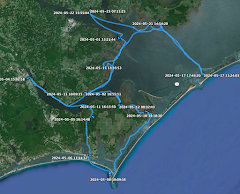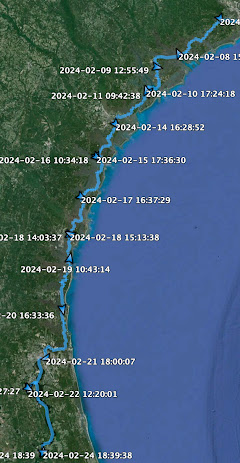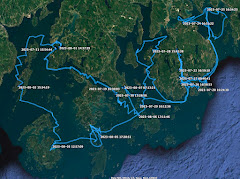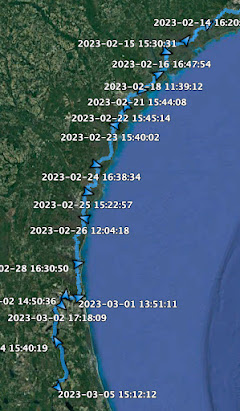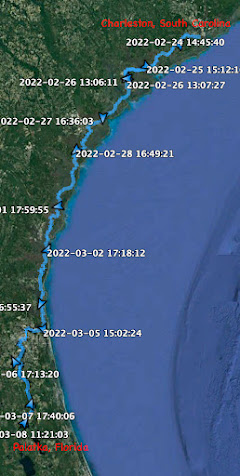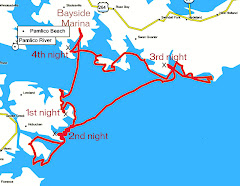I have renewed my COSPAS-SARSAT beacon id, something that is required by NOAA every two years. I think SARSAT stand for search and rescue satellite, I'm not sure was COSPAS means. I'm just glad to have the device with me, particularly when sailing offshore.
I carry both a SPOT and, for the last two years, the ACR beacon. The SPOT stays on the deck, attached by a small line looped around a cleat, where it provides a track for anyone interested in checking on me, a chance to call for assistance, a chance to call for rescue and the opportunity to tell friends on an email list when I'm raising anchor for the day and setting anchor for the night.
The ACR beacon stays in a pouch on my inflatable life jacket/harness. It is on me, just above my right hip, every sailing day on a cruise from anchor up to anchor down.
With a minimum of searching I found my Virginia Barrier Islands waterproof map. It has been about eight months since the last attempt down the eastern shore and I wanted refresh myself on the winding path down the seaside behind the barrier islands. I realized that I would only need to use the back side of the chart which shows the area from Wachapreague Inlet to the southern trip of the shore. The front of the map is from Chincoteague to Wachapreague, and, if we have north winds and good weather, I'll be sailing that portion outside.
I was down in Elizabeth City for work yesterday, being reminded how much I love that town and the Pasquotank River. This morning I checked the forecast to see that Sunday might be a day for sailing - a high in the 60's and winds out of the SW. I'll watch the forecast for the next couple of days. Maybe the first sail of the year will be on the Pasquotank.
steve






















































